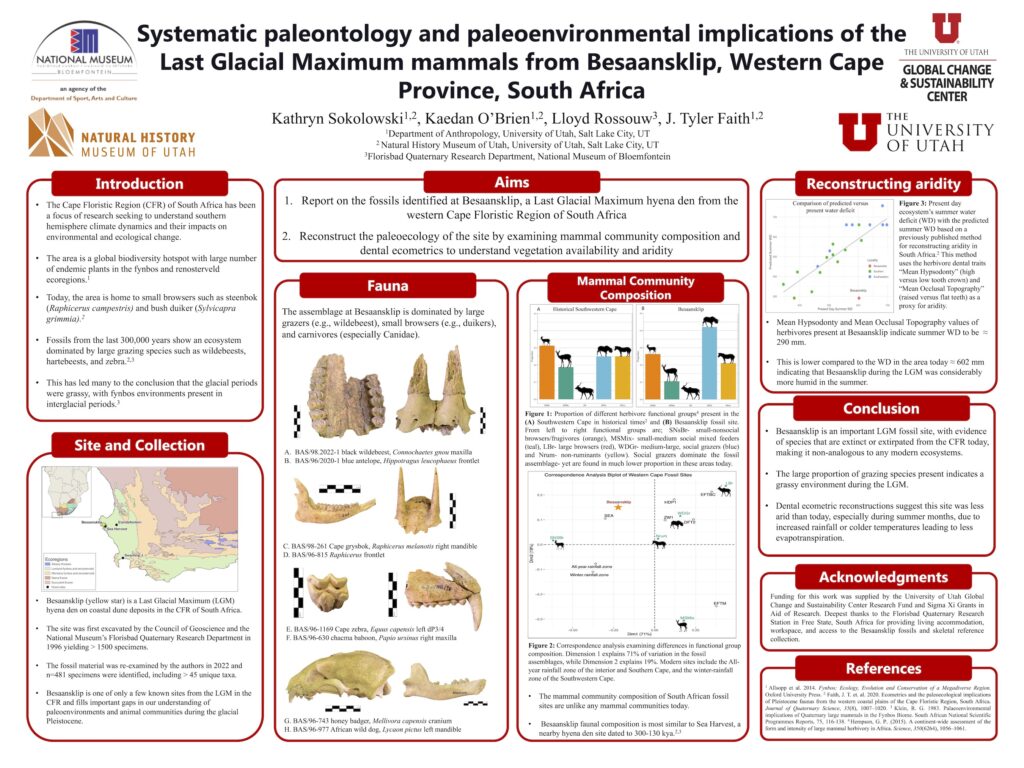Systematic paleontology and paleoenvironmental implications of the Last Glacial Maximum mammals from Besaansklip, Western Cape Province, South Africa
Bio
I am a graduate student in the Department of Anthropology working with Tyler Faith on South African paleoecology. My research focuses on reconstructing past animals’ diets and environments to contextualize human evolution and better understand how species respond to environmental change in the past and present.
Abstract
The Cape Floristic Region (CFR) of South Africa has been a focus of research seeking to understand southern hemisphere climate dynamics and their impacts on ecological change. We report on the fossil mammals from Besaansklip, a Last Glacial Maximum (LGM) hyena den from the western CFR. The abundance and richness of grazers, some of which are now extinct or extralimital, suggests a grassy ecosystem. This contrasts sharply with Holocene and historical faunas, which are dominated by small-bodied browsers that favor the shrubby vegetation communities typical of the present-day CFR. We infer that the environment was less arid in the summer compared to today, partly due to reduced temperatures in the LGM. Besaansklip is one of only a few known sites from the LGM in the CFR and fills an important gap in our understanding of the paleoenvironment and animal communities during the glacial Pleistocene.
Narrative
The Cape Floristic Region, in South Africa, has been a focus of research seeking to understand climate dynamics, environmental change, and human evolution and origins. The area today is known for its hyper-diverse and unique ecoregion, fynbos, which is generally dominated by dry, shrub vegetation. However, little is known about the environmental dynamics of the western cape during the last glacial maximum (LGM) approximately 20,000 years ago. To fill this gap, we analyzed the fossil mammals from an LGM hyena den from a fossil locality called Besaansklip. This site yielded 481 identifiable specimens from > 45 different species.
The area surrounding Besaansklip today is mainly comprised of small browsing species like duikers and grysbok. However, during glacial periods, the area was dominated by larger grassland-adapted species such as zebra, wildebeest, and blue antelope. This indicates there were likely grassland habitats in the cape during this time.
Ecometrics is a tool we can use to predict the environment from the morphology of the teeth in the species present at a site. From our ecometric analysis on Besaansklip, we infer that it was likely much more humid than the area is today. Likely either getting more rainfall in the summer or less evapotranspiration due to colder temperatures. Besaansklip is one of only a few known sites from the LGM in the CFR and fills an important gap in our understanding of the paleoenvironment and animal communities during the glacial Pleistocene.

